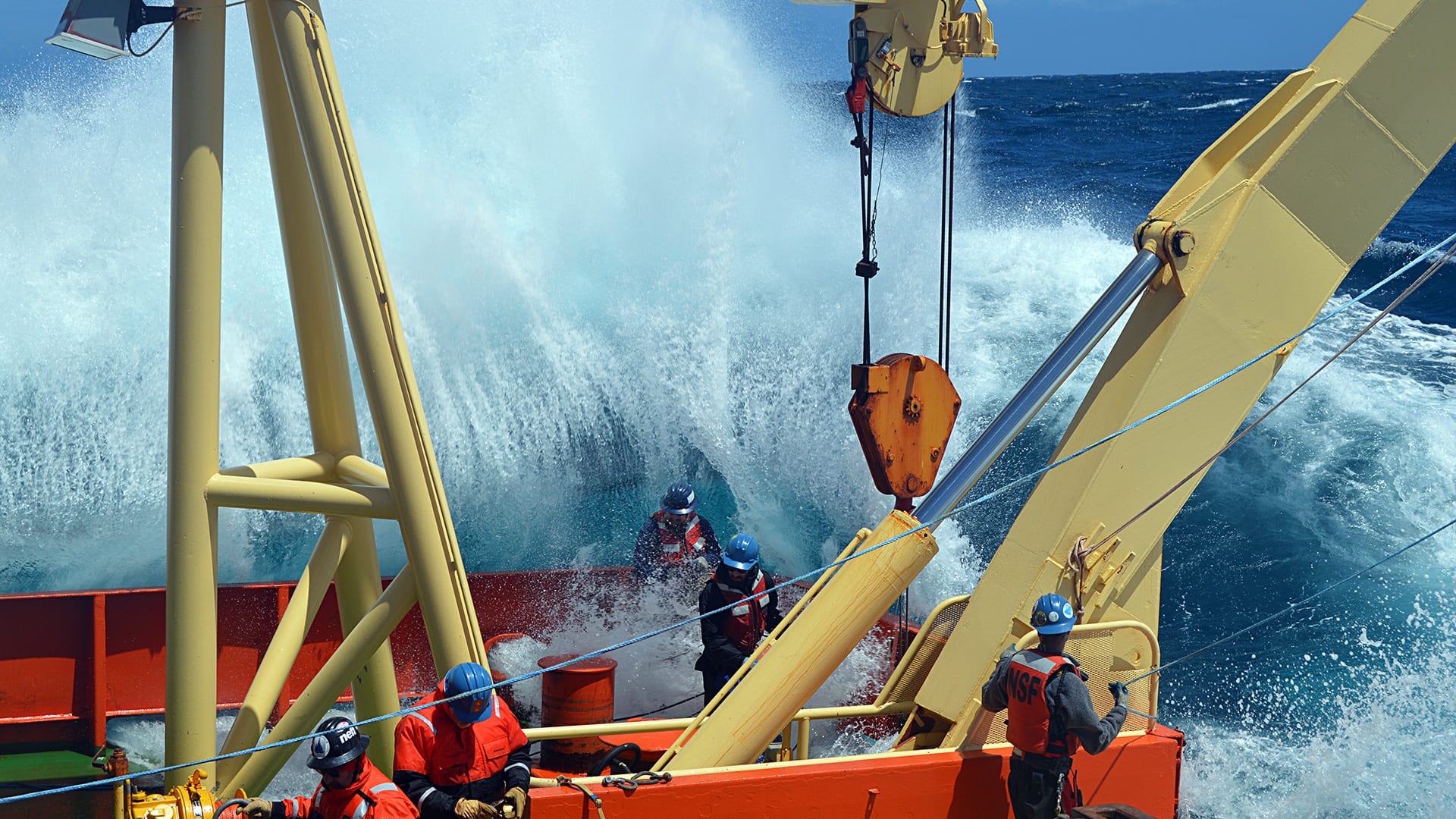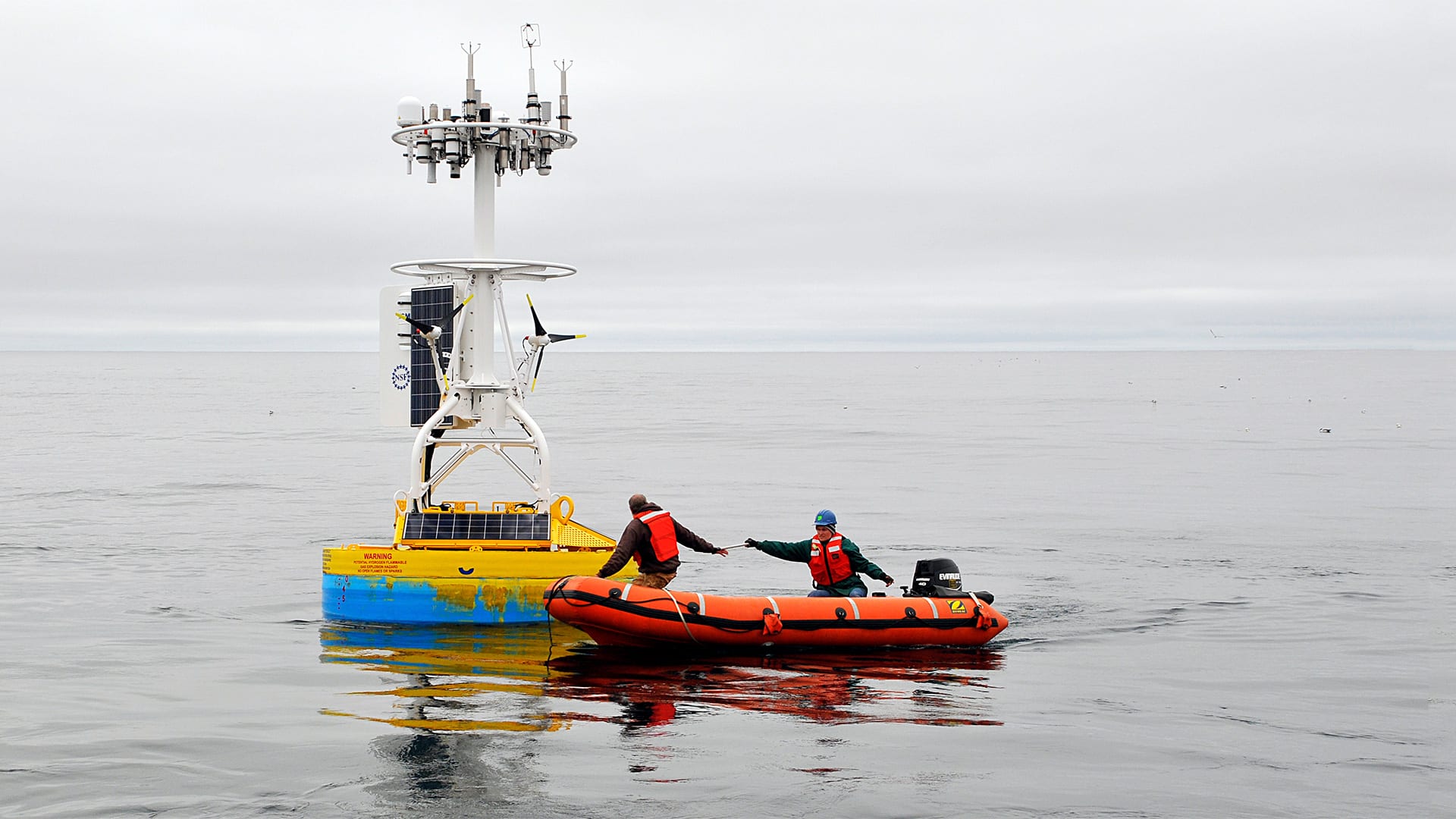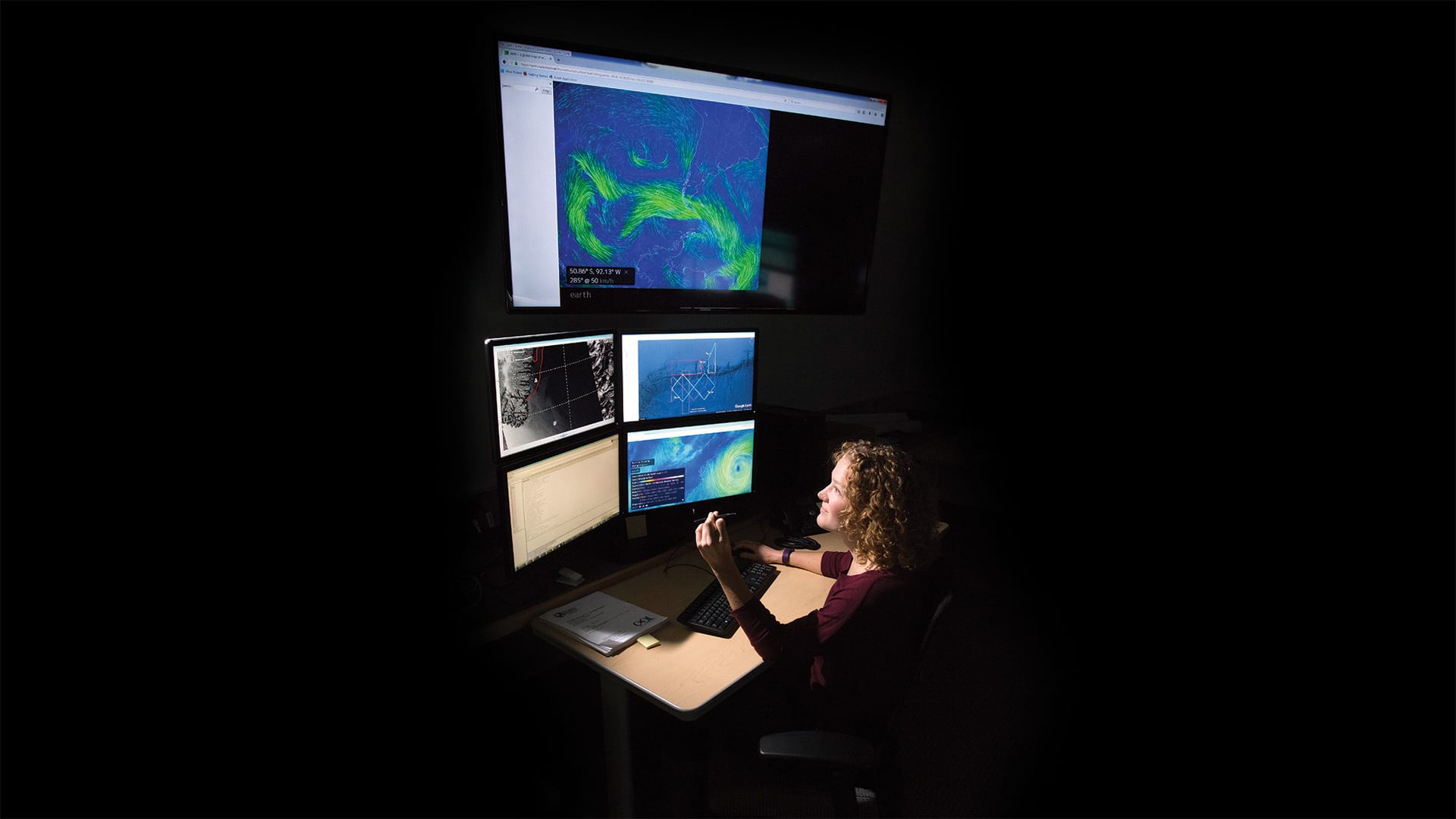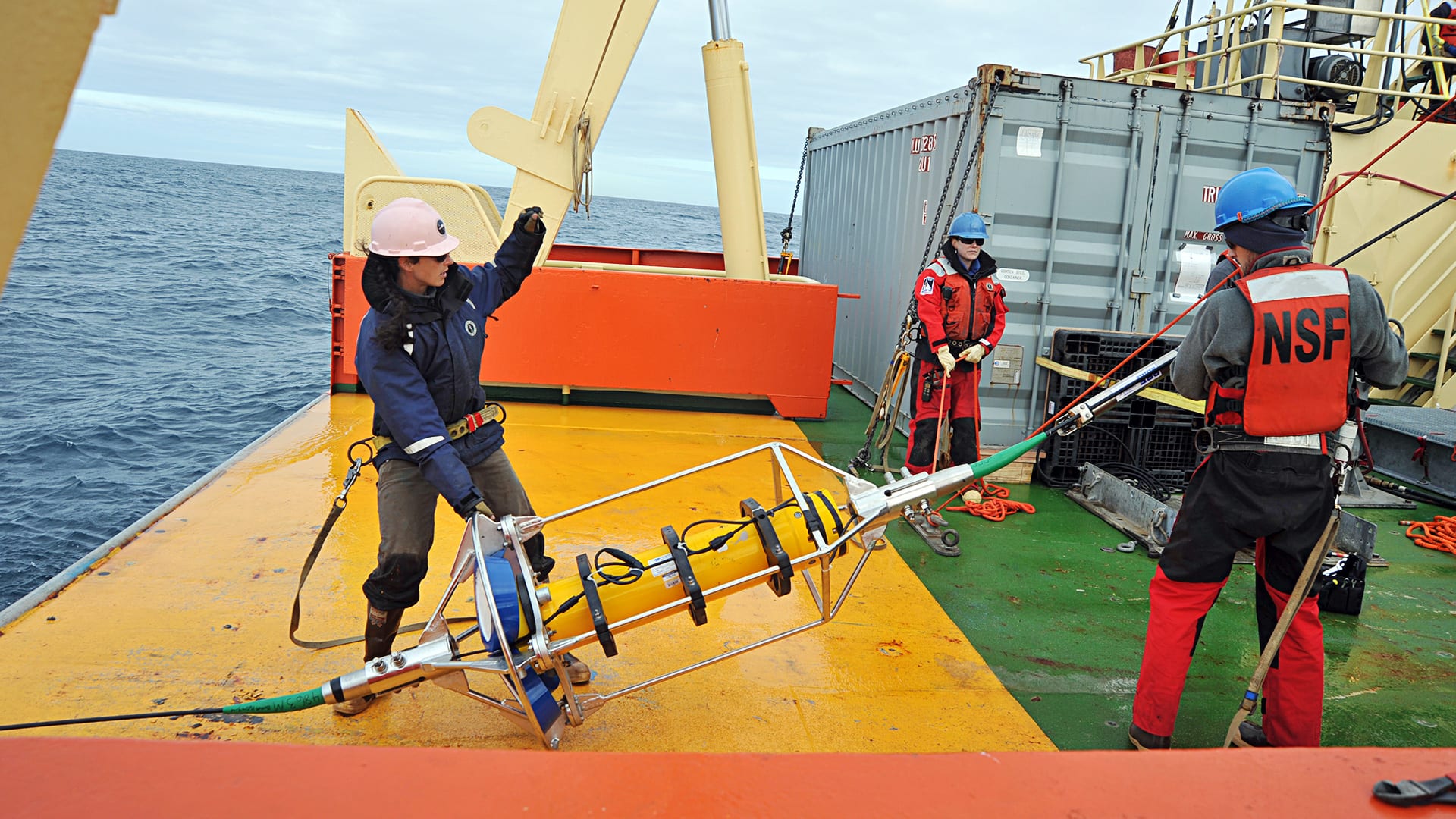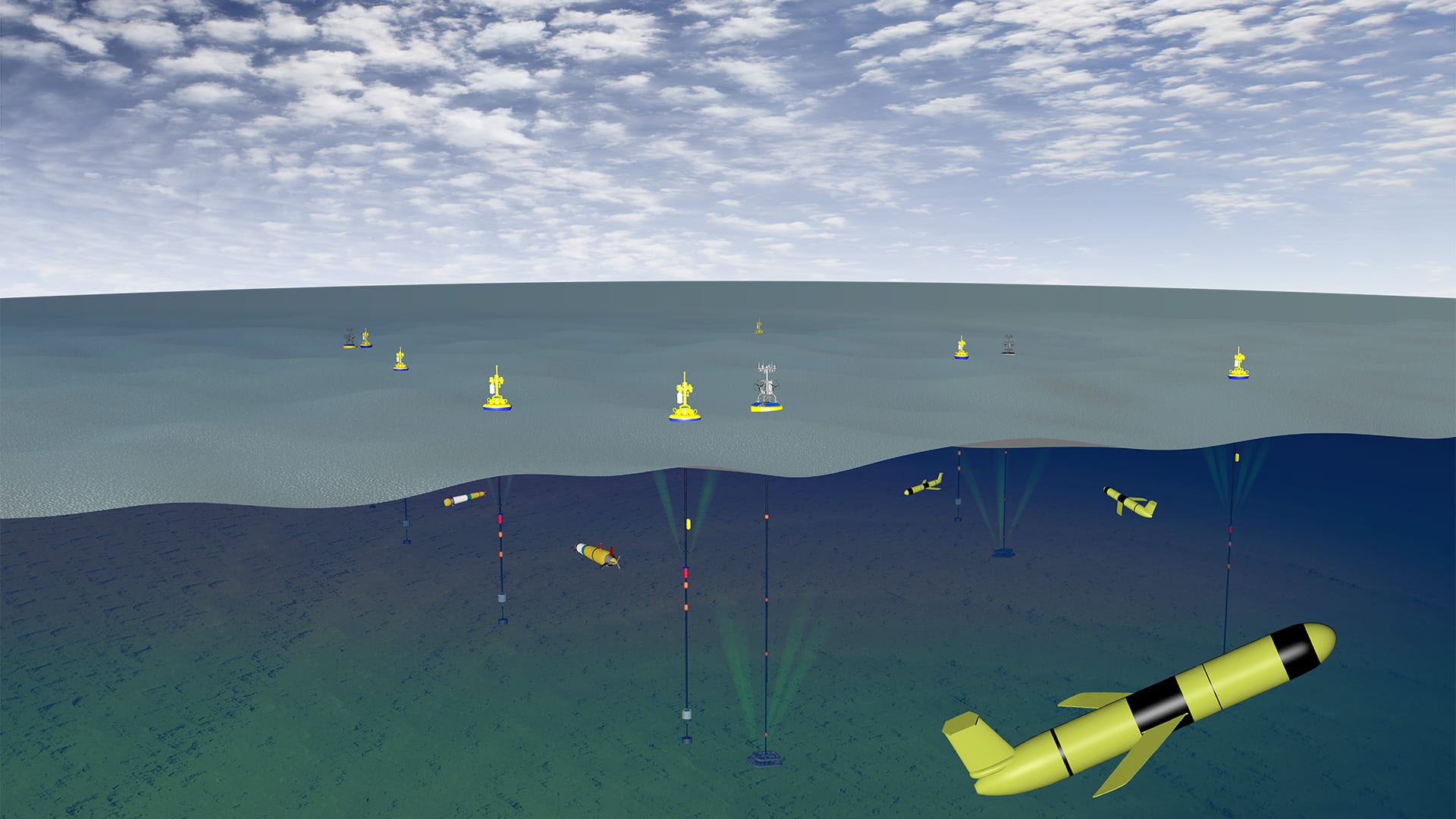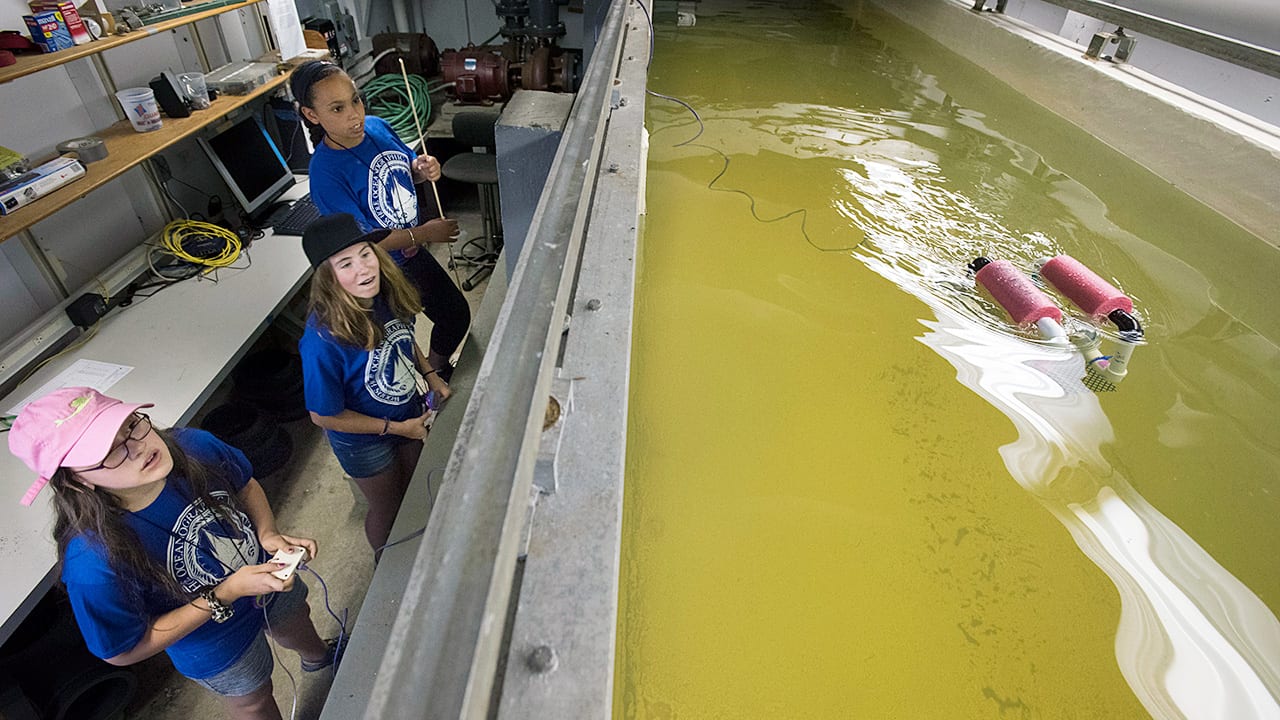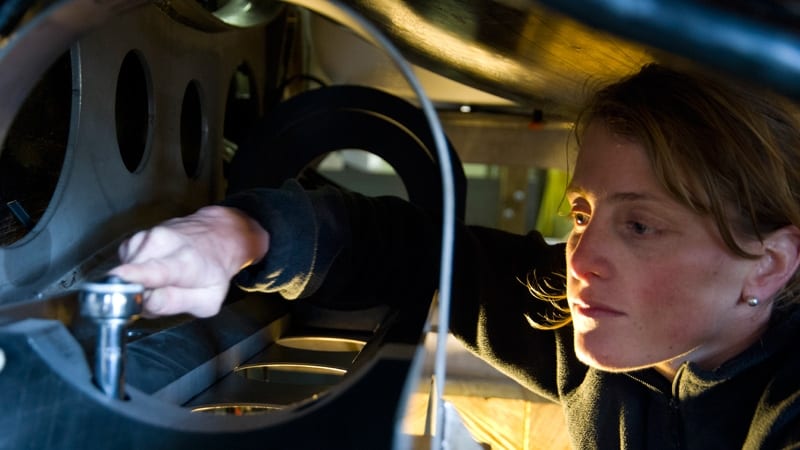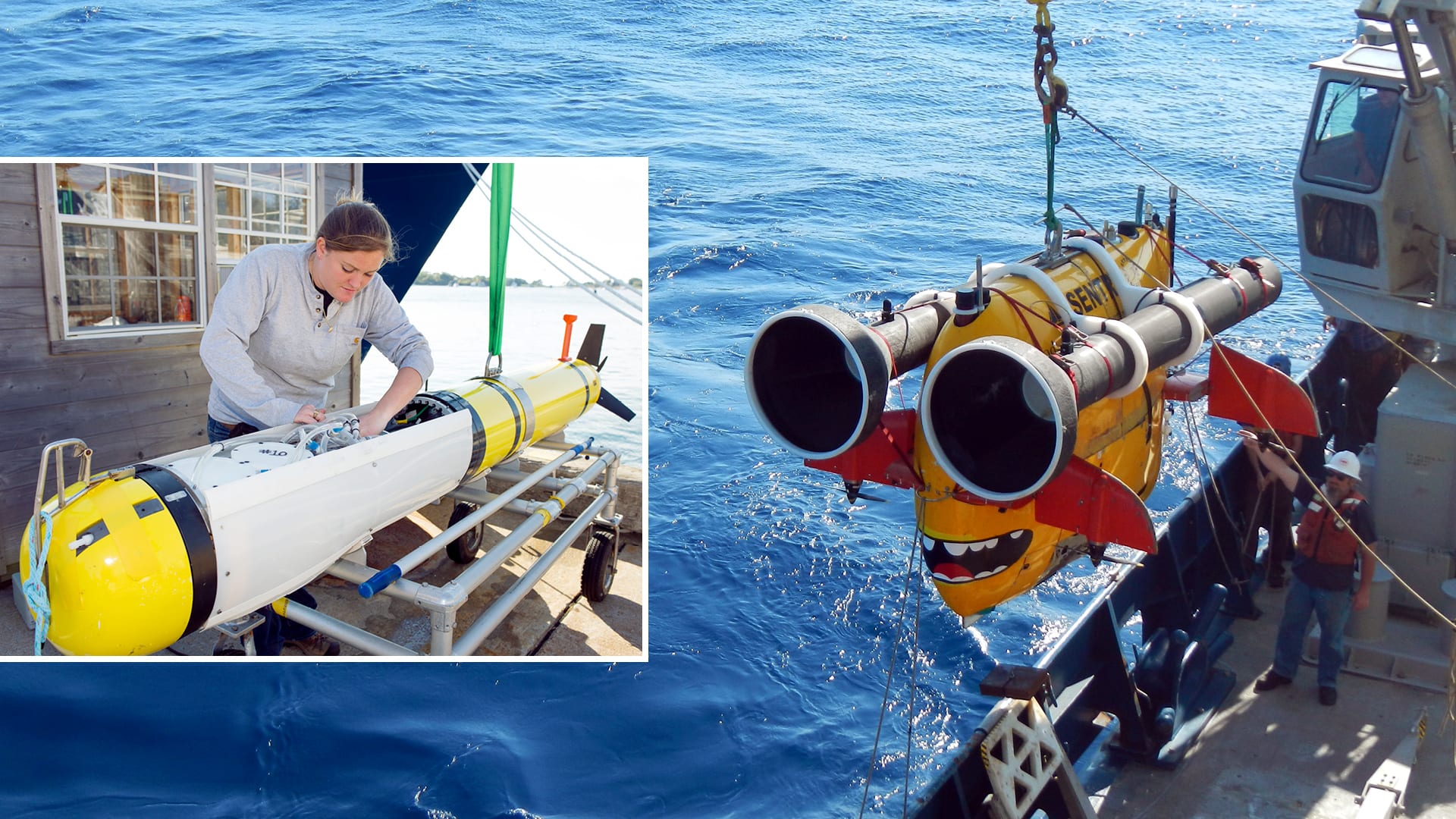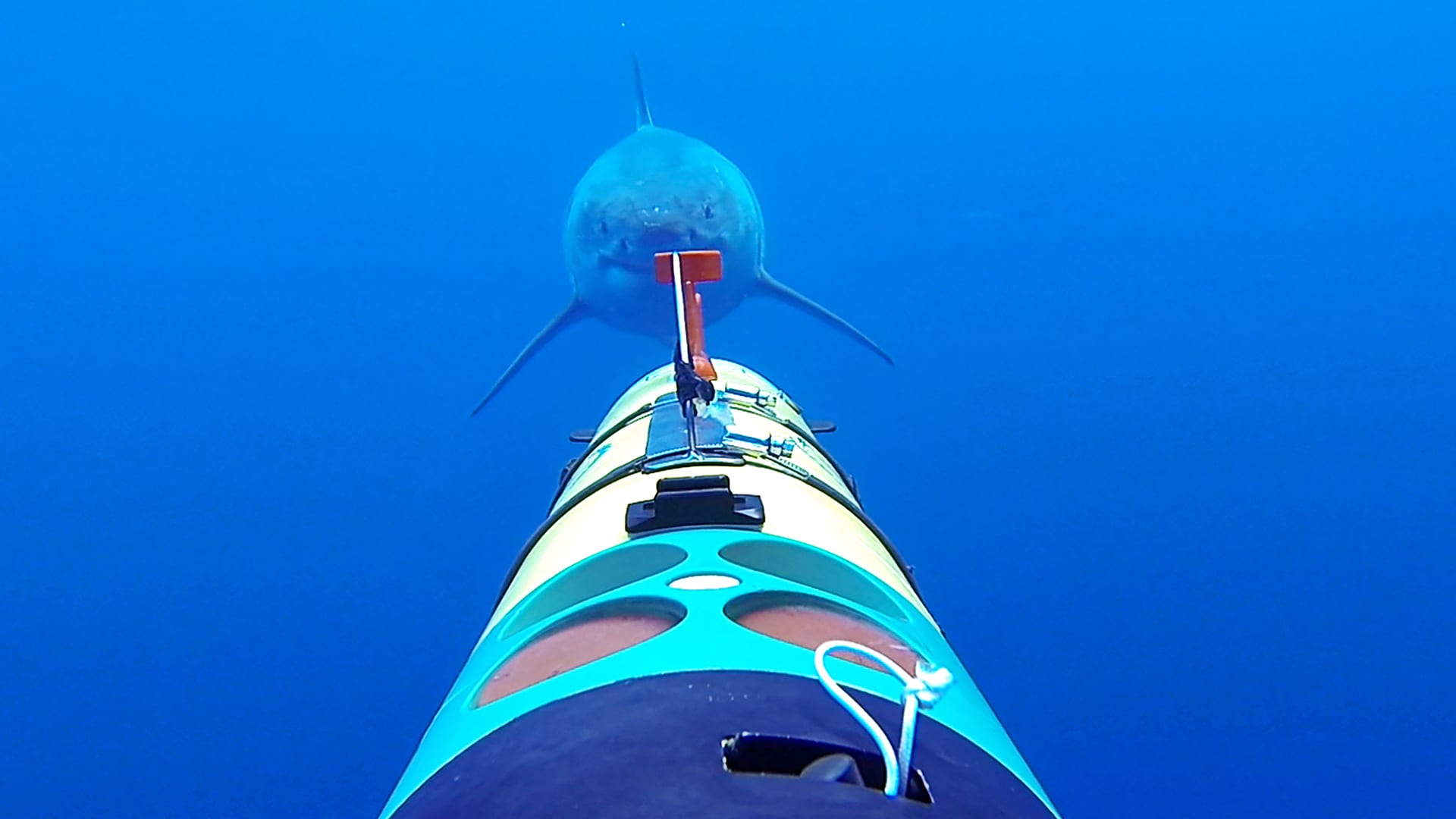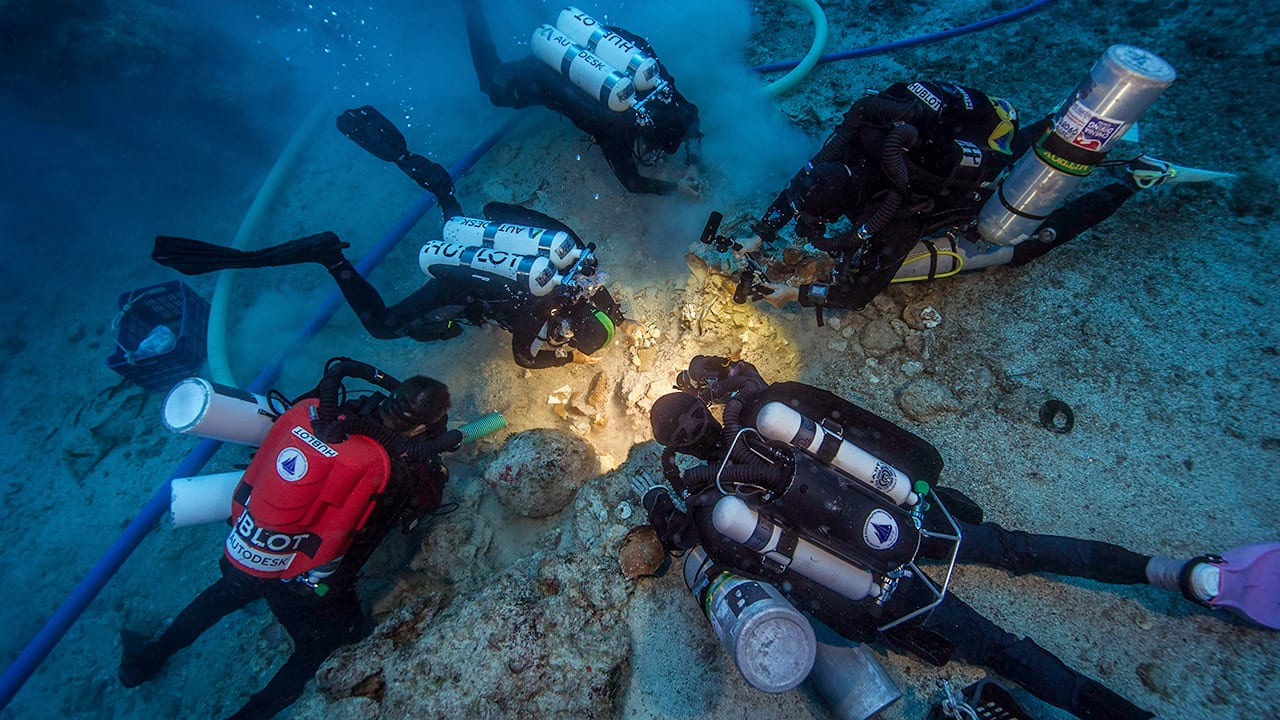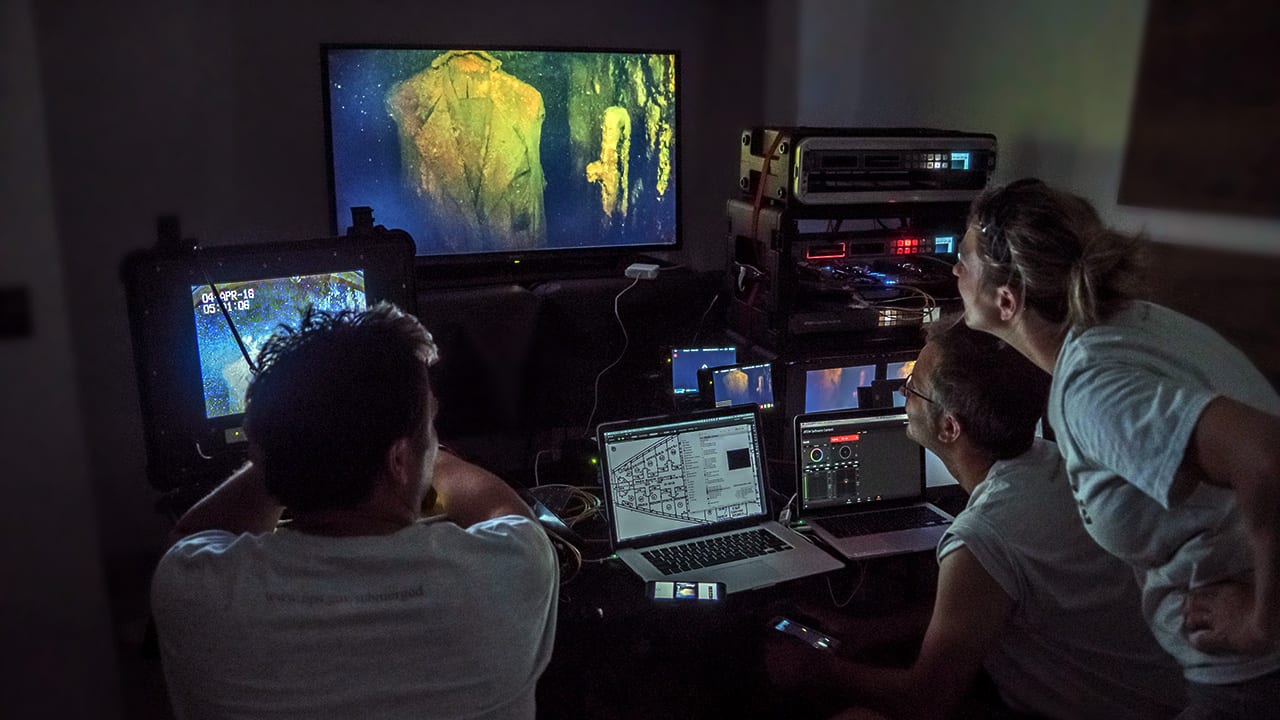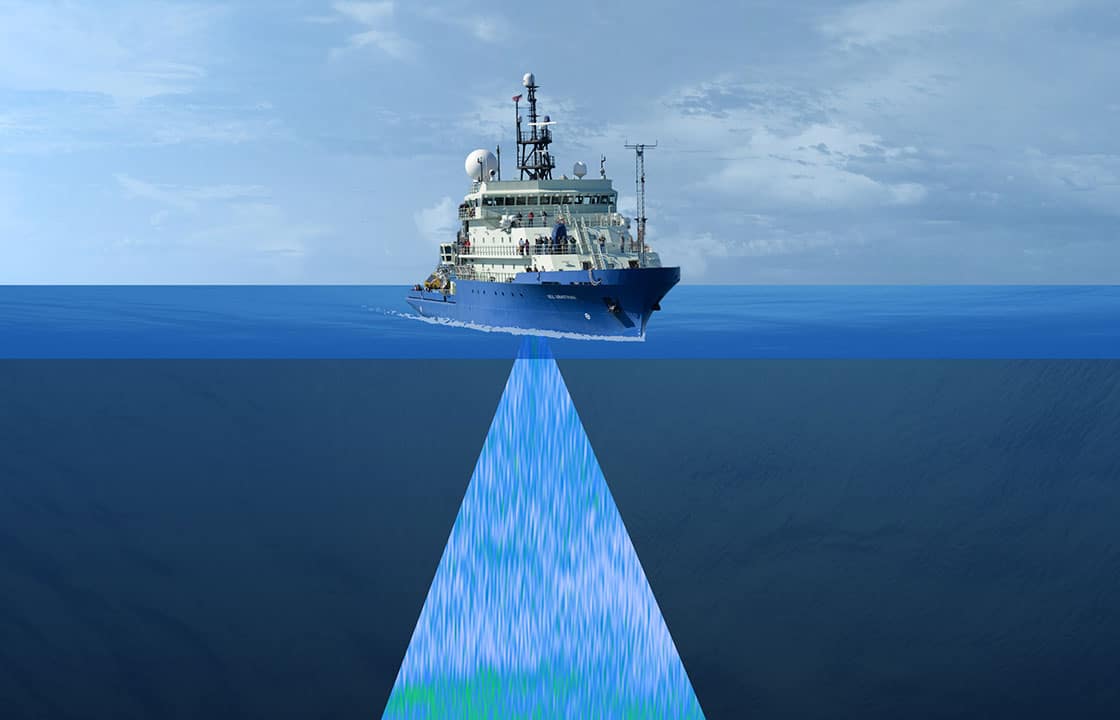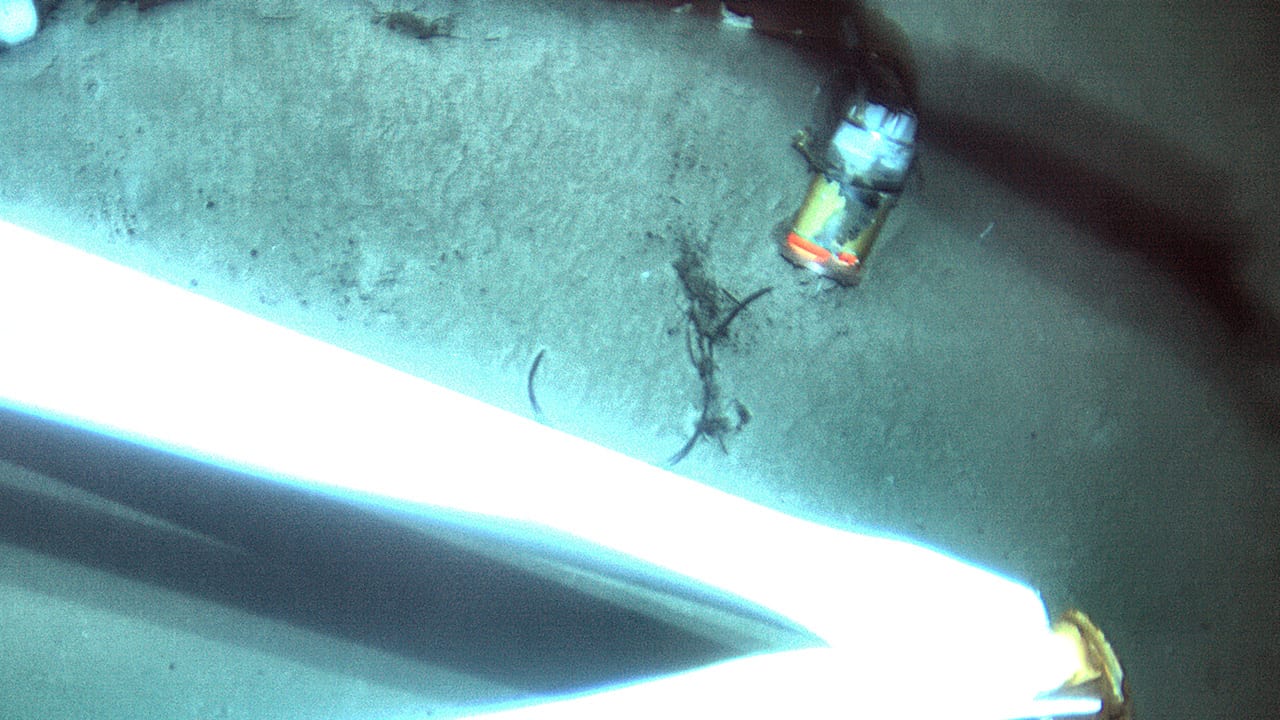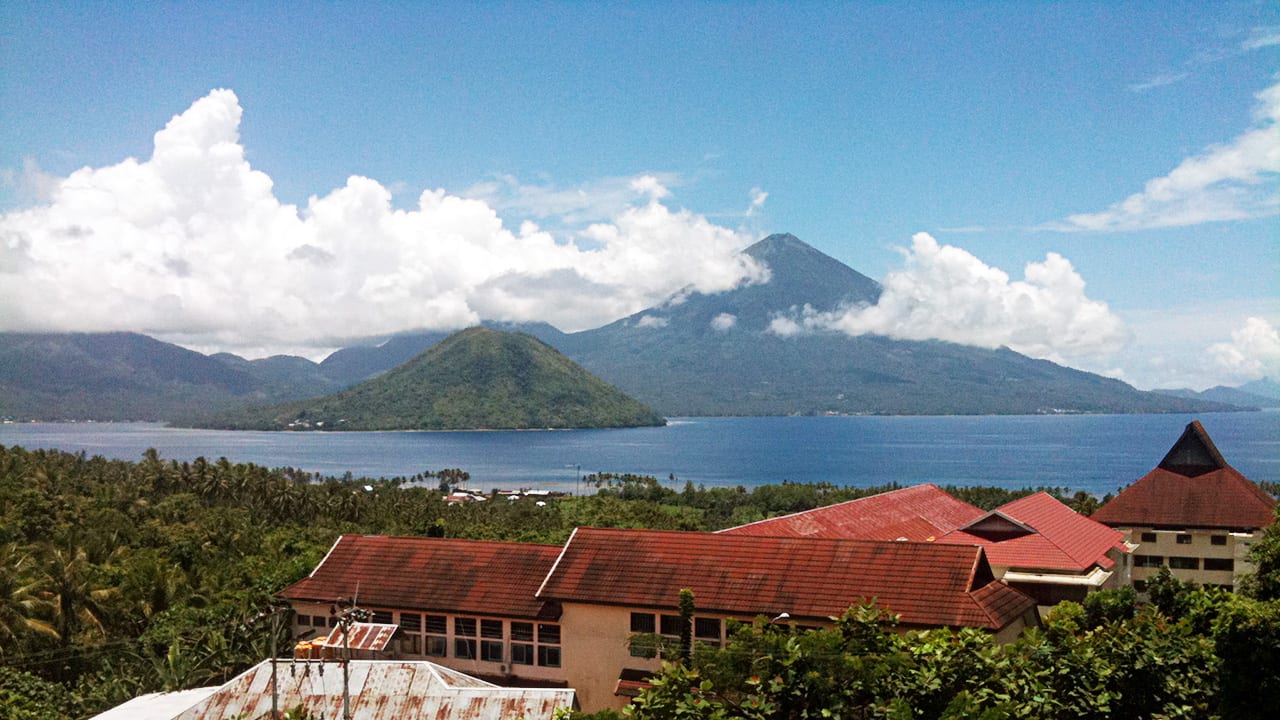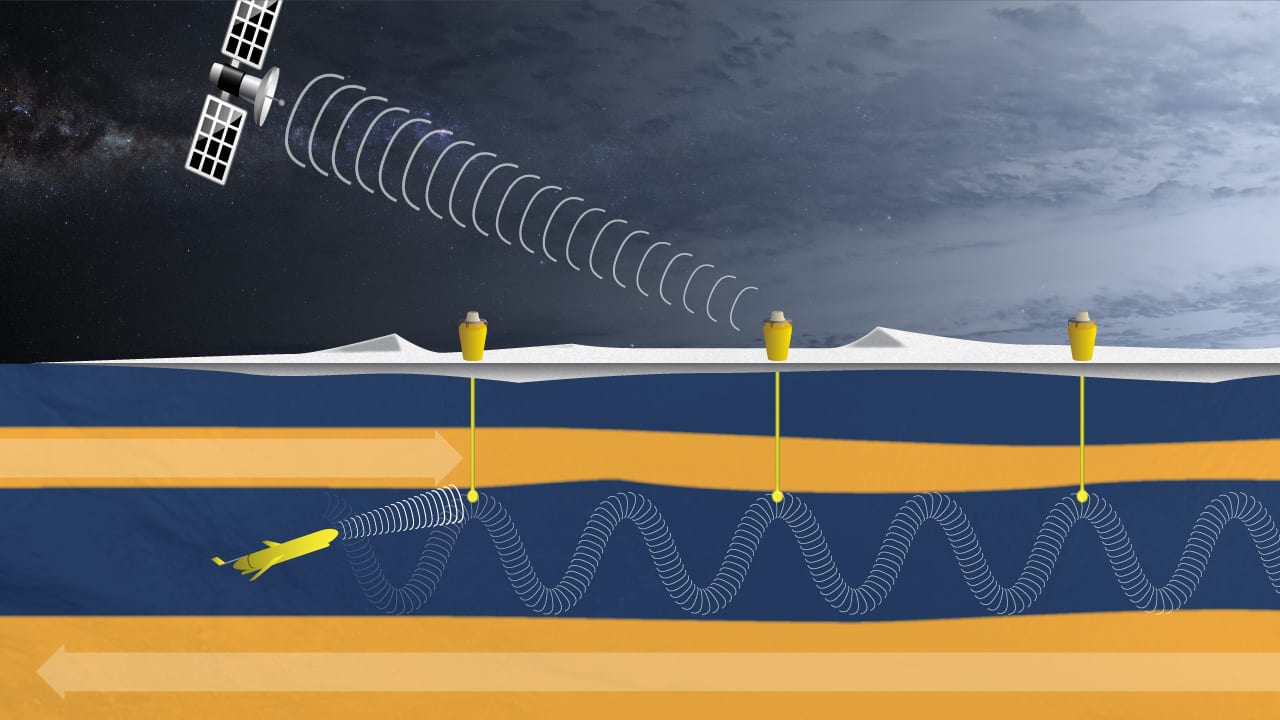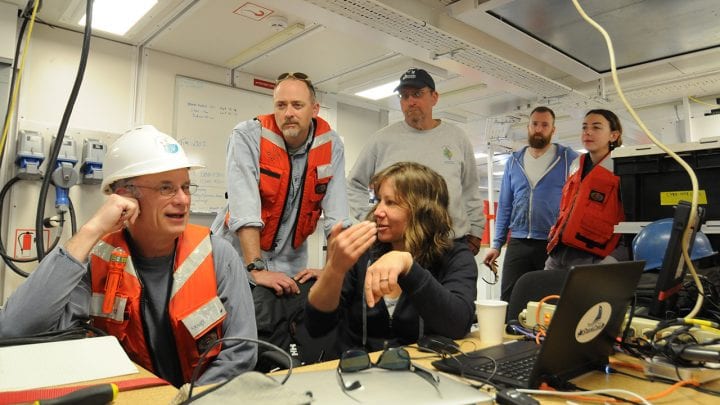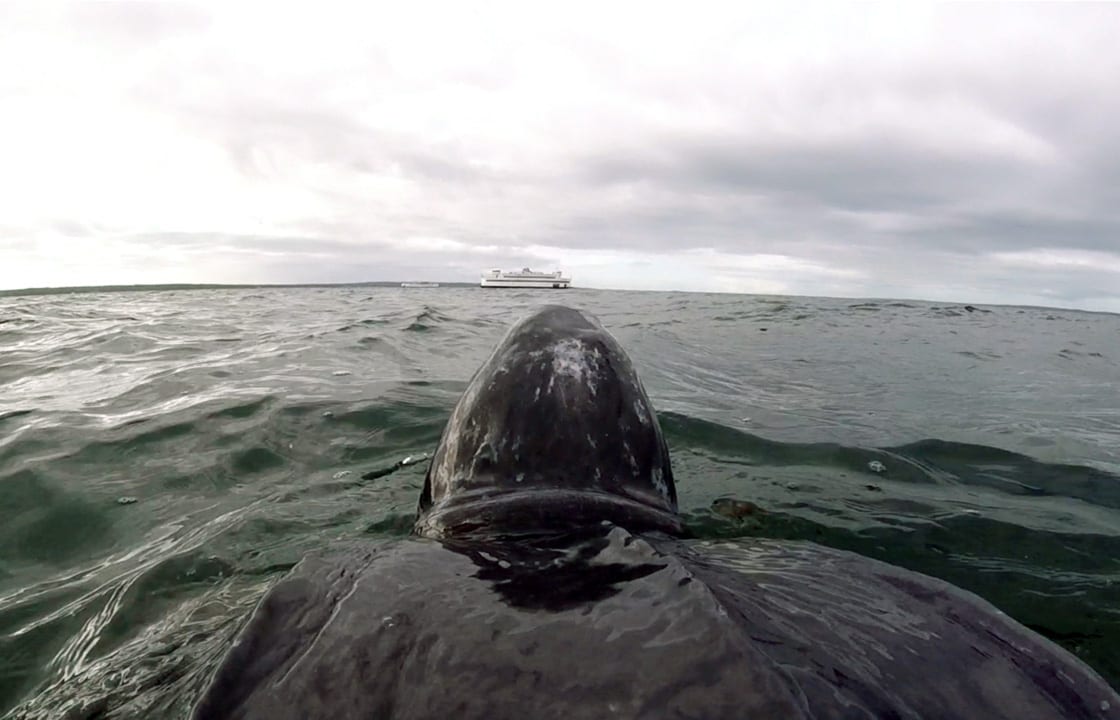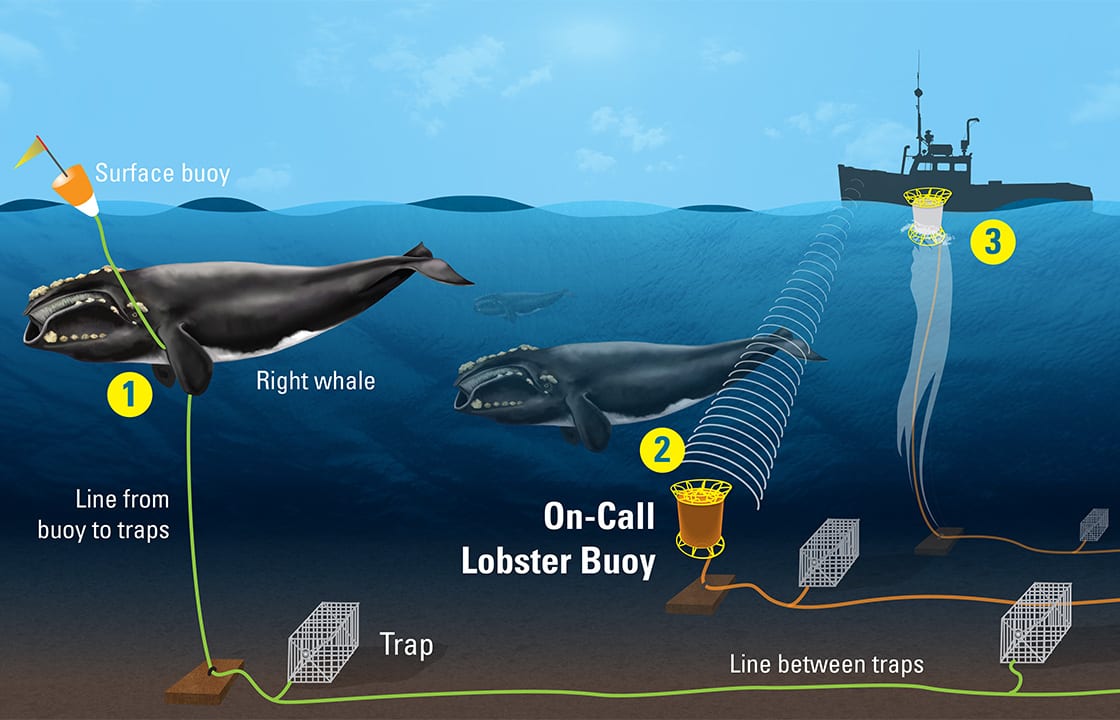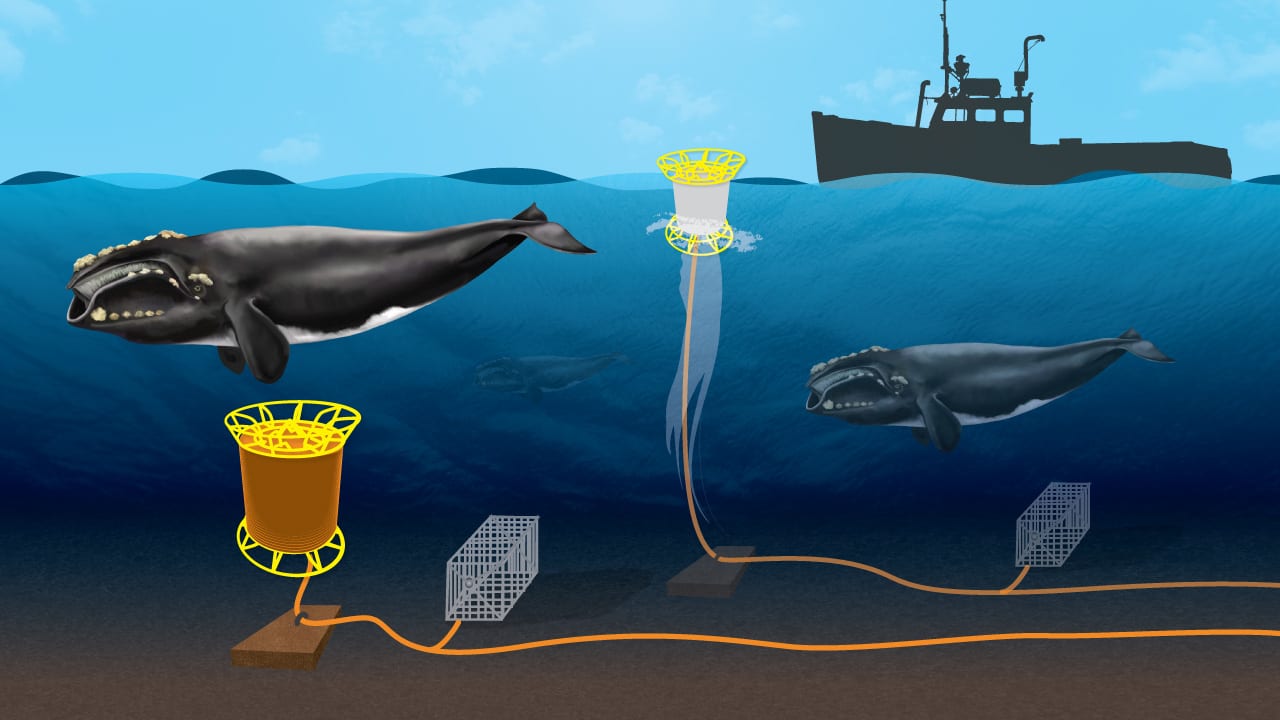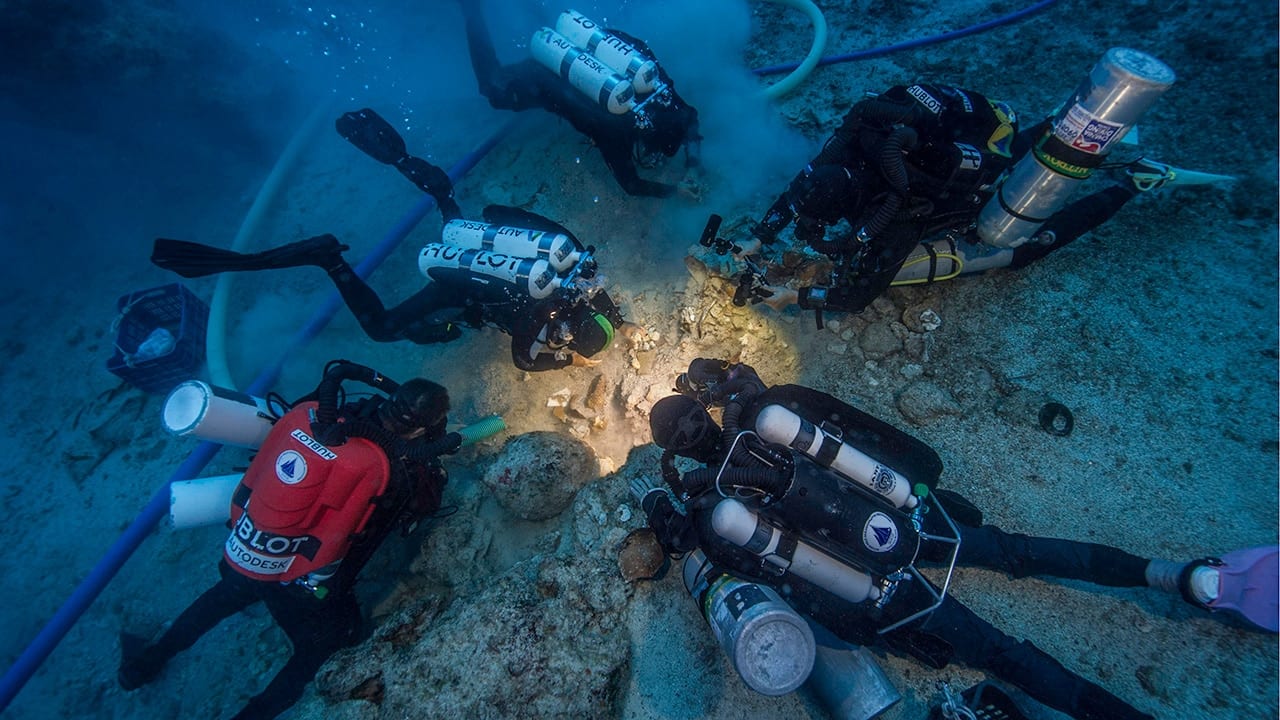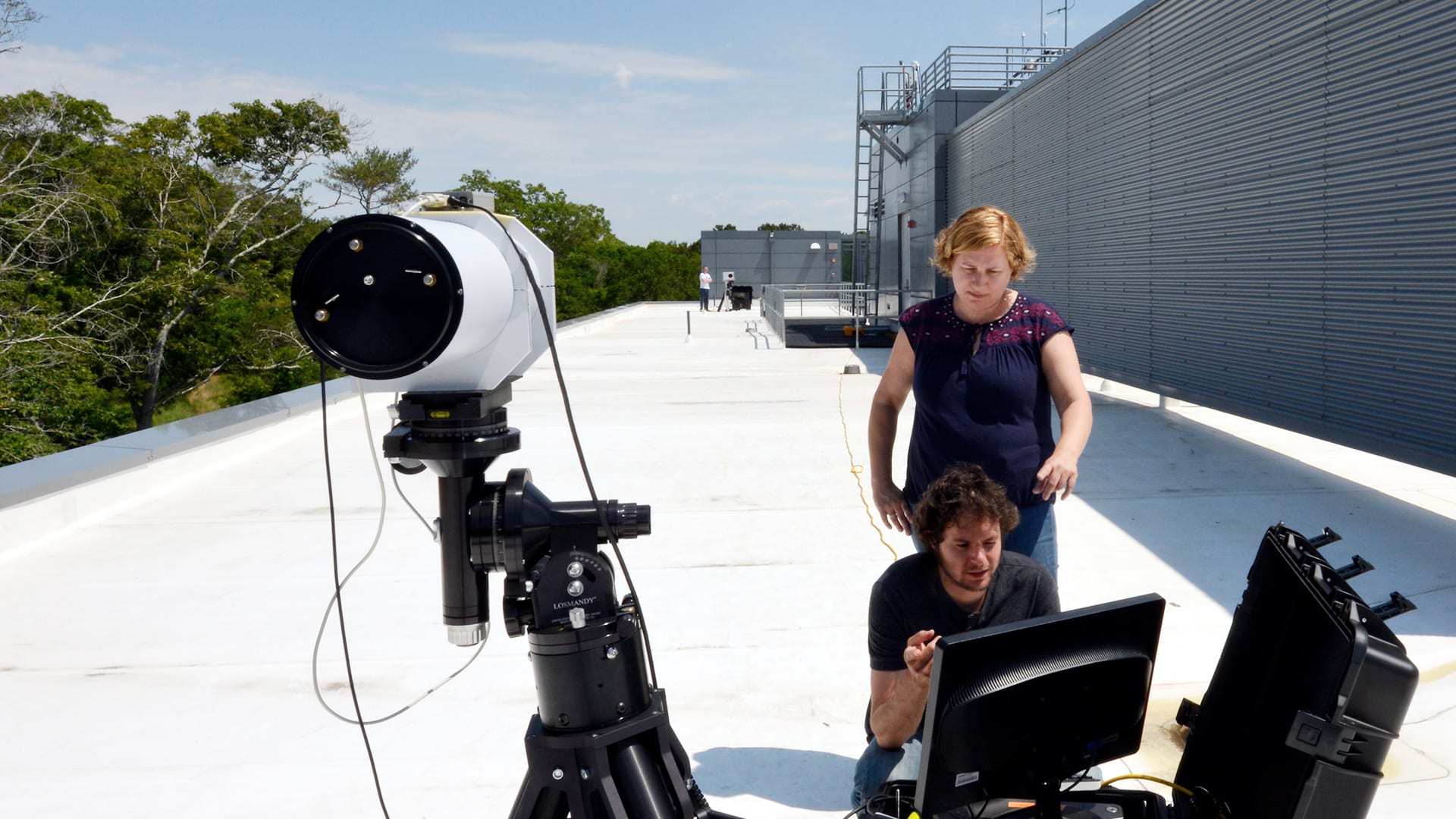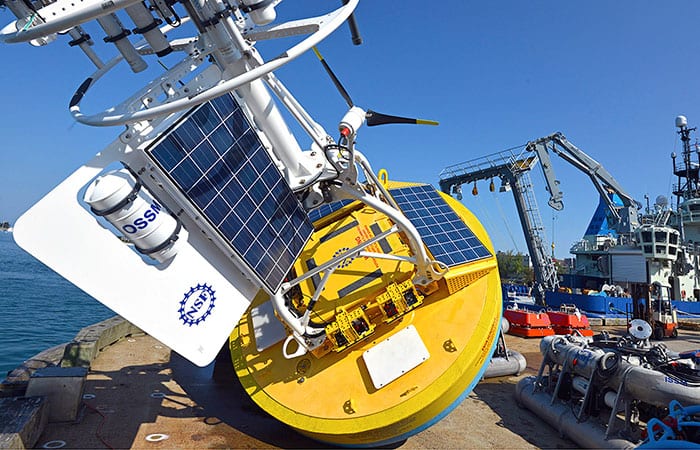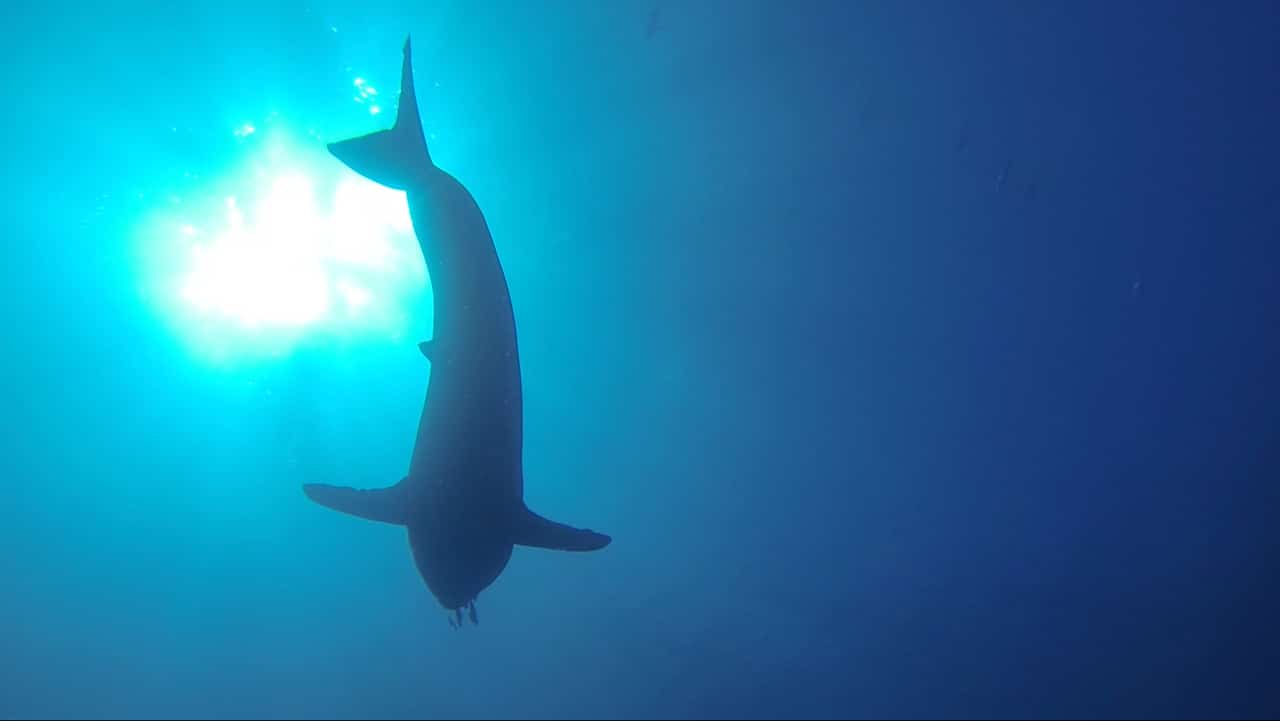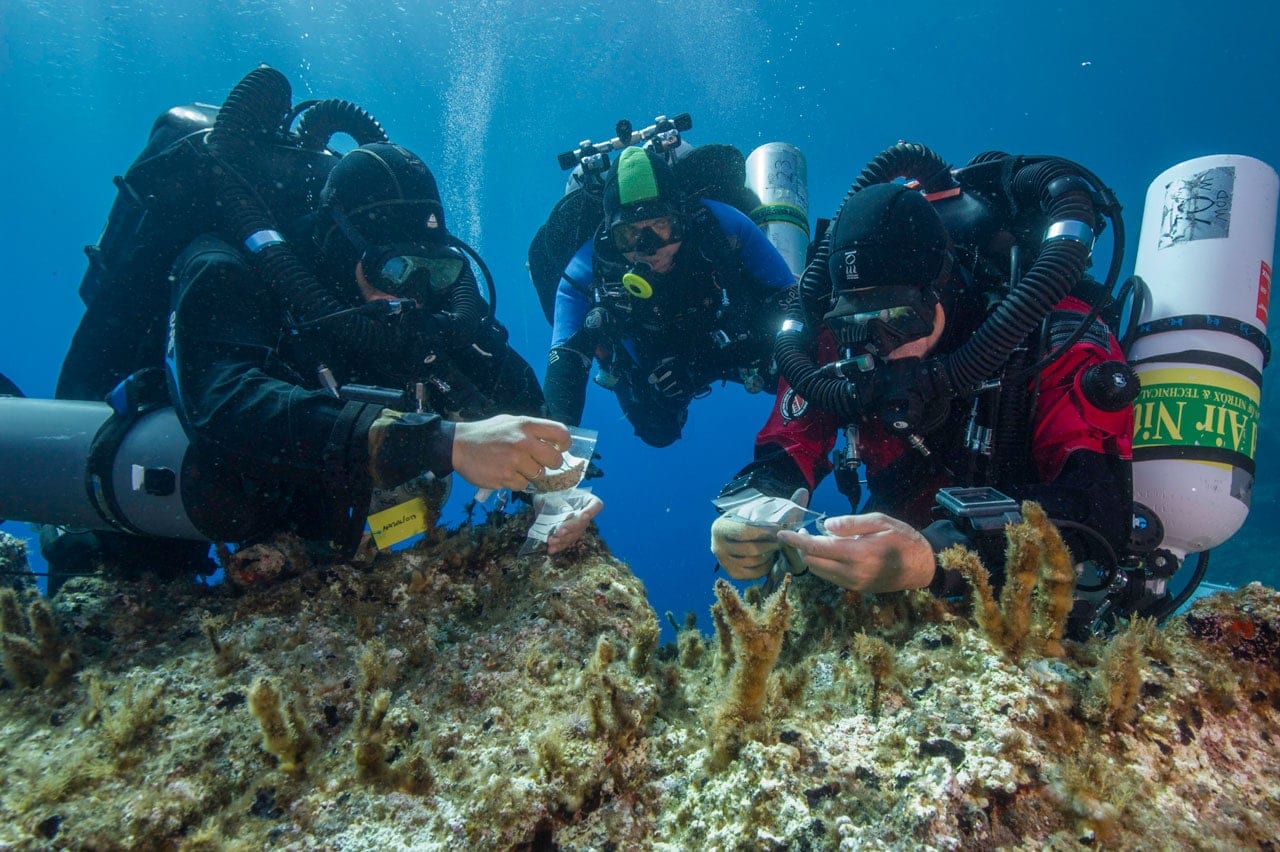Applied Ocean Physics & Engineering
Aqua Incognita
There is a jar of money in the conference room of the Mooring Operations & Engineering (MOE) team at Woods Hole Oceanographic Institution. It is a United Nations kaleidoscope of…
Read MoreThinking Global
The Global Array component of the Ocean Observatories Initiative initially included four remote, high-latitude locations, selected for scientifically strategic reasons: Irminger Sea (60°N, 39°W) WHOI physical oceanographer Bob Pickart has…
Read MoreDiving for Data
It’s the middle of the night on Cape Cod, Mass. Thousands of miles away in the South Atlantic off the coast of Argentina, a bright yellow torpedo-shaped drone floats up…
Read MoreThe Young Woman and the Sea
Meghan Donohue always wanted a career in oceanography. She earned an undergraduate degree in physical oceanography from the University of San Diego. Then she participated in the Sea Education Association’s…
Read MoreA Pioneering Vision
In 2005, scientists at Woods Hole Oceanographic Institution devised a revolutionary plan: They would deploy about 150 scientific instruments in coastal waters south of Martha’s Vineyard to try to understand…
Read MoreGirls Just Wanna Be Engineers
“Very few women go into engineering,” said Anna Michel, “because girls just don’t get the message that they could be engineers.” Michel, a scientist in the Applied Physics and Ocean…
Read MoreWHOI Research Engineer Selected for NASA Astronaut Program
Research Engineer Loral O’Hara was introduced today at Johnson Space Flight Center as a member of NASA’s most recent class of astronauts. O’Hara was one of just 12 to be selected from an applicant pool of more than 18,300 — the largest number NASA has ever received.
Read MorePlankZooka & SUPR-REMUS
Much of marine life begins as microscopic larvae—so tiny, delicate, and scattered in hard-to-reach parts of ocean that scientists have had a tough time illuminating this fundamental stage of life…
Read MoreWhen the Hunter Became the Hunted
In waters off Mexico’s Guadalupe Island, Woods Hole Oceanographic Institution (WHOI) engineers deployed the REMUS SharkCam, a torpedo-shaped robotic vehicle with a special system to track and film great white…
Read MoreAncient Skeleton Discovered
International researchers discovered a human skeleton during ongoing excavations of a ship that sank around 65 B.C. off the Greek island of Antikythera in the Aegean Sea. It is the…
Read MoreInside the Sunken USS Arizona
Mike Skowronski (above left) pilots a remotely operated vehicle into the remains of the battleship Arizona at the USS Arizona Memorial in Pearl Harbor, as Evan Kovacs and Maryann Morin…
Read MoreIlluminating the Ocean with Sound
WHOI’s new research vessel Niel Armstrong is equipped with an EK80 broadband acoustic echo sounder. Using a wide range of sound frequencies, it gives scientists the ability to identify and distinguish between…
Read MoreWhy Did the El Faro Sink?
WHOI deep-sea vehicles and scientists played critical roles in searching the seafloor and locating the voyage data recorder of El Faro, the ship that sank in 2015 during Hurricane Joaquin, killing all 33 crew members.
Read MoreA New Tsunami-Warning System
After successfully testing a long-range underwater communications system that worked under Arctic Ocean ice, an engineering team at Woods Hole Oceanographic Institution (WHOI) adapted it for a very different environment—the…
Read MoreCommunicating Under Sea Ice
Researchers at Woods Hole Oceanographic Institution developed a new communication and navigation system that works over long distances under Arctic sea ice, allowing scientists to use autonomous underwater vehicles to explore the ice-covered Arctic Ocean.
Read MoreAll the Ocean’s a Stage
“All right, Mr. Brickley, the show begins at two o’clock,” John Kemp announced as he entered the ship’s main lab on Saturday afternoon. Kemp is the deck operations leader for…
Read MoreTo Track a Sea Turtle
A WHOI engineer and biologist devise an autonomous system to track and film sea turtles beneath the surface, revealing a turtle’s eye view of the world.
Read MoreHow Would ‘On-Call’ Buoys Work?
WHOI engineers are developing a new kind of lobster trap buoy that could help keep whales from getting tangled in fishing gear. Click on the numbers above to learn more. On a…
Read MoreWhale-safe Fishing Gear
WHOI engineers are developing a new kind of lobster trap buoy that could help keep whales from getting tangled in fishing gear.
Read MoreAncient Skeleton Discovered on Antikythera Shipwreck
An international research team discovered a human skeleton during its ongoing excavation of the famous Antikythera Shipwreck (circa 65 B.C.) this month. The shipwreck, which holds the remains of a Greek trading or cargo ship, is located off the Greek island of Antikythera in the Aegean Sea. The first skeleton recovered from the wreck site during the era of DNA analysis, this find could provide insight into the lives of people who lived 2100 years ago.
Read MoreLet There Be Laser Light
WHOI scientists are developing new sensors using lasers to detect methane, carbon dioxide, and other critical environmental gases in the air and under the ocean.
Read MoreOcean Observatories System Is Up and Running
The Ocean Observatories Initiative has reached a major milestone: Its network of ocean sensor systems is now fully operational and sending a broad, continuous stream of data back to shore. Funded by the National Science Foundation with a planned life of 25 years, the OOI provides online access to a growing trove of multidisciplinary oceanographic data, freely available to researchers, educators, and the public worldwide.
Read MoreSharkCam Tracks Great Whites into the Deep
On the first trip to study great white sharks in the wild off Guadalupe Island in 2013, the REMUS SharkCam team returned with an autonomous underwater vehicle (AUV) tattooed with bite marks and some of the most dramatic footage ever seen on Discovery Channel’s Shark Week: large great white sharks attacking the underwater robot, revealing previously unknown details about strategies sharks use to hunt and interact with their prey.
Read MoreArtifacts Discovered on Return Expedition to Antikythera Shipwreck
An international research team led by archaeologists and technical experts from the Hellenic Ministry of Culture and Sports and WHOI has discovered spectacular artifacts during its ongoing excavation of the famous ancient Antikythera Shipwreck off the Greek island of Antikythera in the Aegean Sea.
Read More
